This is the Best Time to Visit Olympic National Park (And the Worst)

Olympic National Park, a jewel of the Pacific Northwest, lures visitors from all corners of the world with its mossy rainforests, striking coastlines, and mountainscapes. During my own 2 month West Coast road trip, I reached this Washington State National Park at the prime time of mid-summer. It was just in time for the worst wildfires the state’s ever seen, but the temperatures were great. And you work with what you have.
The climate at Olympic National Park can range from mild summers to wet winters. Thus, here’s a glimpse at visitor seasons at Olympic National Park:
- Peak Season: July to September
- Shoulder Seasons: May and September
- Off-Peak Season: October to April
Below, I will also include specifics of what each season brings, any events you wouldn’t want to miss, and a monthly weather synopsis. Whether you’re visiting Olympic for a single day or longer, hot springing Sol Duc Valley, or hiking in the Hoh Rainforest, these are the best times to visit Olympic National Park.
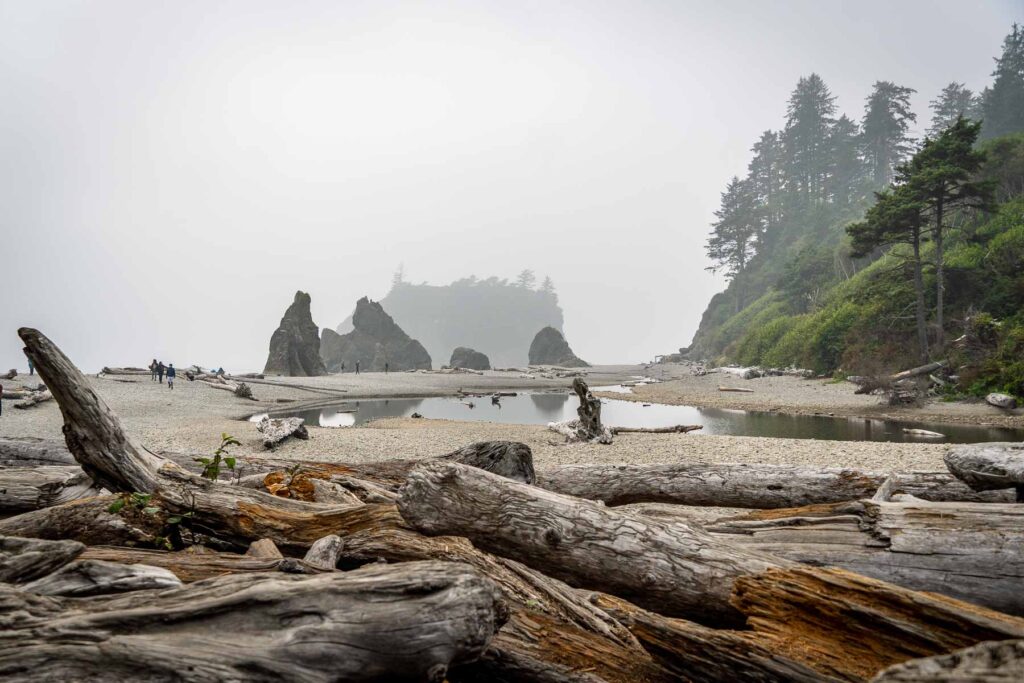
Best Time to Visit Olympic National Park
Best Season to Visit
The best time to visit Olympic National Park is undoubtedly the summer season, specifically from July to September. The temperate weather during this time brings clear summer skies and warm temperatures making for the perfect outdoor adventure experience.
The only caveat is that summer may bring wildfires, but overall, it is still the best season to visit.
Best Time for Good Weather
The summer months are truly unbeatable at Olympic National Park. From July to September, you can expect moderate temperatures, typically ranging from 65°F to 75°F, that make for fantastic hiking and exploring conditions. It’s a splendid time when visitors are greeted with sun-drenched landscapes and clear blue skies.
Best Time for Smaller Crowds
The off-peak months from October to April are ideal for fewer crowds. Many potential visitors are deterred by the colder and wetter conditions which means you might have the wilderness almost entirely to yourself. Visitor numbers usually dwindle to a few hundred per day, compared to thousands during summer.
Best Time for Lower Prices
If you’re budget-conscious and looking to save, visit during the off-peak months from October to April. Accommodation rates, especially in and around the park, can drop by as much as 30-40% compared to peak summer prices. Plus, you’ll find cheaper deals on guided tours and outdoor activity rentals. But park entry fees are the same year-round.

Worst Time to Visit
The worst time to visit Olympic National Park is during the colder months of December, January, and February. During these winter months, the park often experiences heavy rainfalls and snow, leading to road closures and making outdoor activities challenging. Being quite far north, the daylight hours are also fewer.
Park Closures
The park remains open all year round, 24 hours a day, even during the chilly winter months. However, some park roads, campgrounds, and other visitor facilities may close during the winter due to weather conditions. Specifically, during the winter season, Hurricane Ridge Road has limited hours, open to uphill traffic from 9 am to 4 pm, Friday through Sunday, and some holidays.
If there are severe wildfires nearby or in the park, certain areas of the park may also shut down in the summertime.
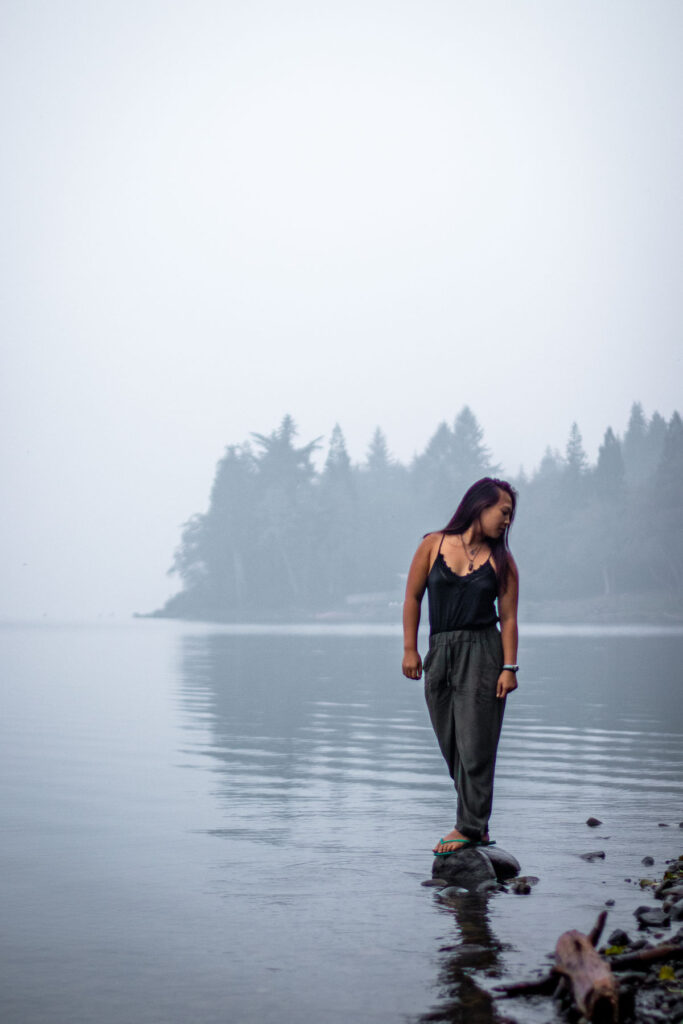
Seasons at Olympic National Park
Spring (March-May)
Spring is the season of new beginnings. As the winter snow begins to recede, many of the park’s trails and viewpoints become accessible. The weather during this time starts to warm up, with temperatures averaging between 45°F to 60°F.
March to April is when wildflowers begin to bloom, carpeting the meadows in a riot of colors. Spring also marks the start of the wildlife awakening from their winter slumber. Sightings of animals like black bears, deer, and mountain goats become common.
However, spring is also considered part of the rainy season in the park. Be prepared for occasional showers and pack rain gear. In my experience, many of the rainforest trails are wet and muddy all the time.
The park is less crowded during this time, but some high-elevation areas and trails may still be closed due to lingering snow, particularly in early spring.
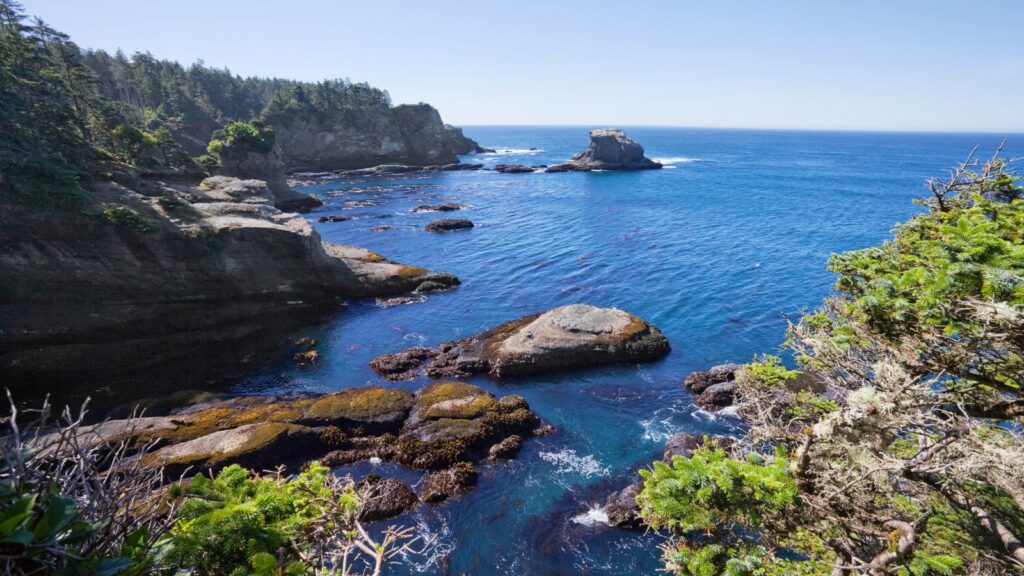
Summer (June-August)
Summer, spanning from June through August, is the pinnacle of outdoor adventuring in Olympic National Park. This period sees the park at its most vibrant, with lush green forests, glistening lakes, and a spectacular array of wildlife. The long, sunny days are great for hiking, camping, wildlife spotting, and scenic drives.
During these months, average daytime temperatures range from a comfortable 75°F to 85°F. The snow melts away from the high mountain trails, opening up fantastic hiking and backpacking opportunities. It’s the best time to trek through the Hoh Rainforest or climb Mount Olympus.
July and August are particularly impressive for wildflowers, especially in the subalpine meadows around Hurricane Ridge.
Despite the potential of wildfires, summer also offers the best conditions for stargazing.
The park is busiest during this period, and reservations for camping and accommodations are strongly recommended.
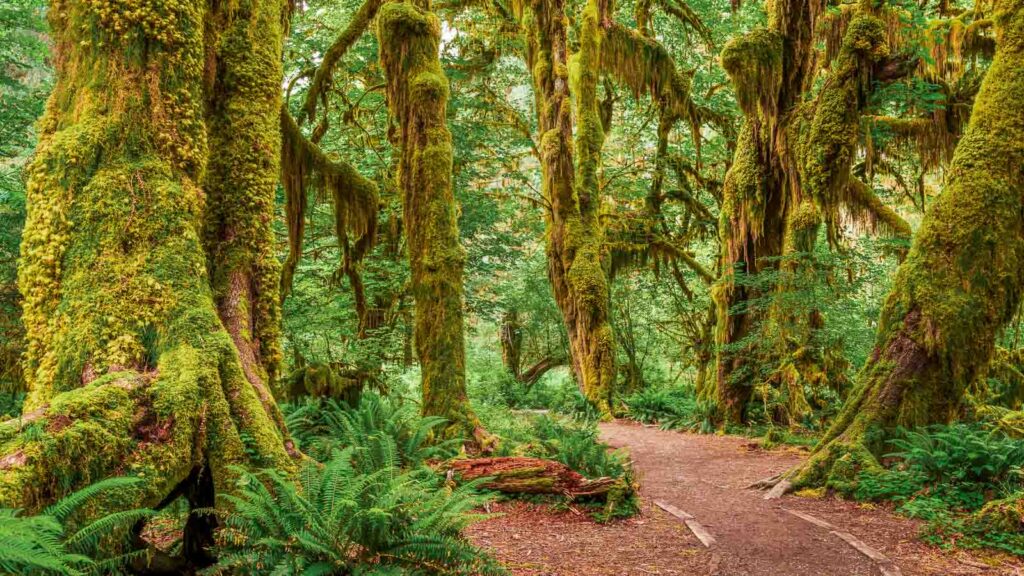
Fall (September-November)
Fall is when the summer crowds thin. The weather during these months starts off warm, with September often seeing temperatures similar to summer. However, as the season progresses, temperatures begin to cool down, averaging between 45°F to 65°F by November.
The park transforms into a canvas of reds, oranges, and yellows as the leaves change color. The lowland forests and river valleys become a kaleidoscope of fall hues, particularly in the Hoh Rainforest and the Quinault Rain Forest.
Another key highlight of the fall season is the annual salmon run. This is when salmon return from the ocean to their birthplaces in the park’s rivers and streams to spawn. This natural phenomenon starts in September and continues into November.
Fall is the start of the rainy season, with November typically being the wettest month. Be prepared for intermittent showers and pack waterproof clothing.
As visitor numbers dwindle, accommodation rates also drop, making it a good time for budget-conscious visitors. However, be aware that as winter approaches, some high-elevation areas and trails may start closing due to early snowfall.
Winter (December-February)
Winter spans from December through February. The park transforms into a winter wonderland with snow-capped mountains, frosted forests, and icy waterfalls.
During these months, the average daytime temperatures range from a chilly 30°F to 45°F. The higher elevations receive substantial snowfall. The Hurricane Ridge area, specifically, becomes a hotspot for snowshoeing, skiing, and snowboarding. However, the road to Hurricane Ridge is only open from Friday to Sunday, weather permitting.
The lowland forests and valleys receive less snow, making them accessible for winter hikes. Trails like the Hoh River Trail and the Quinault Rain Forest Nature Trail remain open.
Winter is also a great time for wildlife viewing. You may spot Roosevelt elk herds in the lowland forests, or bird watchers can enjoy spotting winter migratory birds along the coast.
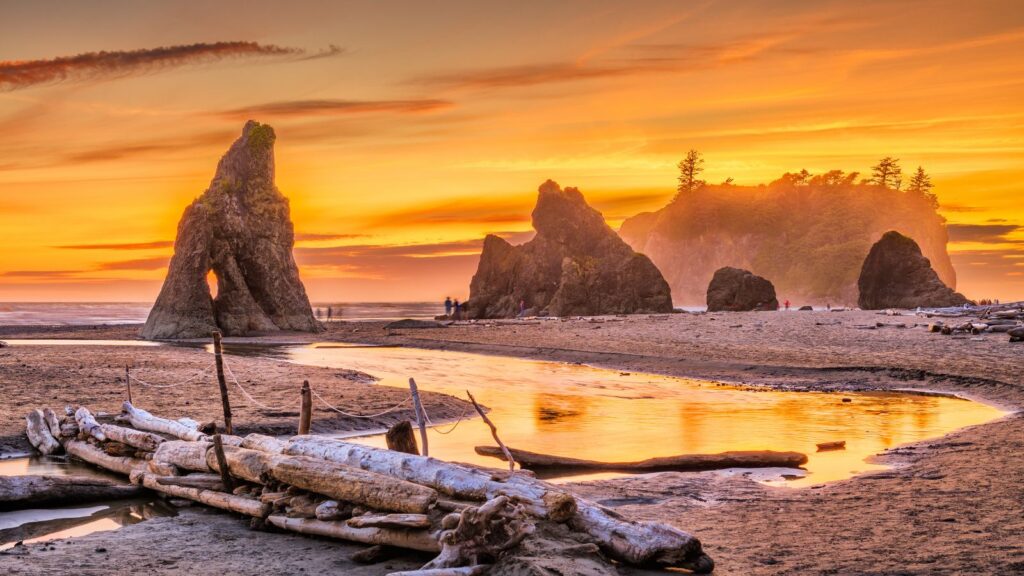
Olympic Weather by Month
Here is a month-by-month breakdown of the average high and low temperatures, and precipitation at Olympic National Park:
| Month | Avg High (°F) | Avg Low (°F) | Avg Precip (inches) |
|---|---|---|---|
| January | 44 | 34 | 18.27 |
| February | 49 | 35 | 13.15 |
| March | 52 | 35 | 13.54 |
| April | 57 | 38 | 9.21 |
| May | 62 | 43 | 5.78 |
| June | 66 | 47 | 3.91 |
| July | 70 | 50 | 2.47 |
| August | 72 | 50 | 2.59 |
| September | 69 | 47 | 4.03 |
| October | 59 | 42 | 11.80 |
| November | 49 | 37 | 18.63 |
| December | 44 | 34 | 16.78 |
Best Time of Day to Visit
The best time of day to visit Olympic National Park is early in the morning, just as the park is waking up. The lakes are glassy and calm, and the soft, golden sunrise light through the moss is beautiful. Additionally, wildlife is typically more active during these cooler hours.
Here’s a breakdown of what you can expect at different times of day:
- Early Morning (6 am – 9 am): As mentioned, early mornings are great for sunrise photography, wildlife spotting, and enjoying peaceful hikes before the crowds arrive.
- Mid-Morning to Afternoon (9 am – 3 pm): As the day warms up, it’s the perfect time to hit the trails or take a dip in one of the park’s lakes. The park’s visitor centers are also open during these hours.
- Late Afternoon to Evening (3 pm – 7 pm): The lowering sun can offer beautiful, diffused light through the trees. Sunsets can be amazing on the beach areas.
- Night (7 pm onwards): As the park settles into the night, go stargazing.

Special Events or Festivals
If you’re planning to visit the stunning Olympic National Park, there’s a lot more to enjoy beyond its natural wonders. Here are some not-to-be-missed events and festivals that take place nearby:
- Olympic National Park Entrance Fee-Free Day – Mark your calendars for November 11, when you can experience the park without any entrance fees.
- Noche Flamenca at Field Hall – A cultural event that showcases flamenco music and dance.
- Annual Razor Clam Digging at Kalaloch Beach – If you’re a seafood enthusiast, this event is a must-attend.
- Juan de Fuca Festival of the Arts – Celebrate local arts and crafts at this lively event.
- Sequim Sunshine Festival – Experience the sunshine of the nearby town of Sequim at this festival.
- River & Ocean Film Festival in Forks – Scheduled in April, this event is a treat for film lovers.
- Grays Harbor Shorebird Festival in Hoquiam – Perfect for bird watchers, this festival takes place in April/May.
- Red Wine & Chocolate Tour – A must-attend event in February for wine and chocolate lovers.
Don’t close that tab just yet…Where to Next in Washington?
I’ve vanlifed through Washington on two extensive road trips, once just up and down the coast and another from the east to west. If you happen to be traveling anywhere in Washington, check out these other destination itineraries.
- The Best Way To Spend One Day In North Cascades for First-Timers
- Perfect One Day in Olympic National Park Itinerary for First-Timers
Catherine, a seasoned travel writer, has lived in 4 different states and explored 36 states and 28 national parks. After spending two years embracing van life, she's now dedicated to sharing her vast knowledge of day trips across America. Catherine's other works has been referenced in major publications like MSN, Self, and TripSavvy.
| MY FAVORITE TRAVEL RESOURCES |
✈️ Find amazing guided tours and experiences with Viator to maximize your time! 🏘️ Plan ahead and secure your accommodation with Booking.com in advance. 🧾 Rent a car with Discovercars in advance and get the best prices for your day trip adventures. |

